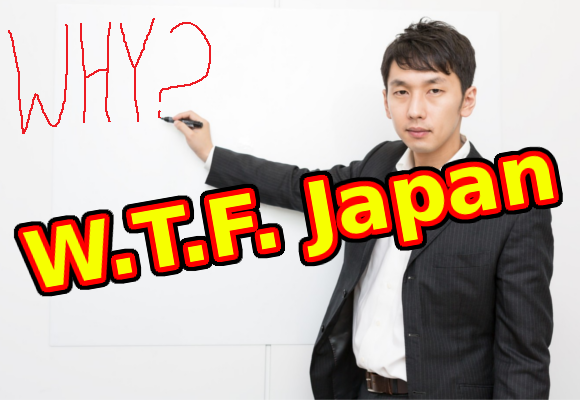
It would just be silly if the kanji for “strong” had “weak” in it… right?
Honestly, considering most kanji were created thousands of years ago in an ancient Asian culture, it’s amazing how many of them still make a decent amount of sense today to foreign learners. For example, you have kanji like 人 (hito, meaning “person”), 木 (ki, meaning “tree”), and when you put them together: 休 (yasumu, meaning “to rest”). Makes just as much sense today as it did when it was first created!
But sometimes the individual pieces of kanji can come together in odd ways. In fact, every so often, the pieces might make you think the kanji has the complete opposite meaning than it actually does.
That’s why today we’re counting down the top five kanji with ironic meanings. What are they and how did they get this way? Today, we find some answers.
So let’s get to it! Starting off with…
Honorable Mention: 家 (“home”)
First up we have to touch on one well-known kanji that, while not quite ironic, is still made up of pieces that stand out in stark contrast to its meaning.
The kanji is one that most Japanese learners encounter pretty quickly: 家 (ie, “house”). Just looking at it, even if you don’t know any Japanese, it might seem like it makes sense. There’s a little roof thing on top… but what’s that thing underneath the roof? A person? A table?
Nope. It’s a pig.
▼ Just in case that wasn’t clear, here’s the parts of the
kanji for “house” shown a little bit more blatantly.
So why does this kanji mean “house” and not “barn” or “pig sty” or something?
According to Kenneth G. Henshall’s amazing book on kanji etymology, A Guide to Remembering Japanese Characters, the reasoning behind using “pig” has nothing to do with pigs. Instead it was likely used phonetically to stand in place for the word “relax.”
If that doesn’t make much sense, imagine if we wanted to write the English word “pigment” using pictures. One way to do it would be like this:
▼ The word “pigment” has nothing to do with “pigs” or “men,” but they can be used
phonetically to stand in for the sounds. Just like the kanji for “home.”
So in the ancient proto-Chinese or whatever language the people who first invented kanji spoke, the word for “relax” was probably close to if not identical to the word for “pig,” leaving us with the confusing kanji we have today.
#5. 強 (“strong”)
Oh yeah! The kanji for “strong.” That’s gotta be a badass kanji, right? Maybe it’ll be made up of “muscle” and “tearing open shirt?” Or “giant boulder” and “destroy with one fist?”
Or, you know, it could be made up of a part meaning “bug” and the same parts as the kanji for “weak.”
▼ Above: the part of the kanji that means “bug” replaced by an actual bug.
Below: the kanji for “strong” and “weak” share some pretty close features.
So what’s going on here?
Well, everything in the kanji for “strong” that’s not “bug” is a simplification of an older kanji that by itself means “big/strong.” The “bug” got added in at some point to refer to a horsefly, a “strong” insect whose bite can pierce the skin, and we’re left with the kanji we have today.
And for the similar parts that “strong” and “weak” share, that squiggly thing means “bow” and the two extra lines on the kanji for “weak” mean “hair.” So in the kanji for “strong,” the “bow” implies strength, as in the strength necessary to pull a bow. But in the kanji for “weak,” the “bow” implies something that can bend easily, like “hair” too.
▼ So remember, a “bow with bugs” means “strong,” not “weak.”
Thanks a lot, ancients.
#4. 異 (“different”)
Next up is a kanji that doesn’t come up for a little while in most Japanese learners’ studies, but I know that once I hit it, it took me by surprise.
The kanji is 異 (kotonaru) meaning “different.” By this point you might be saying: “let me guess… is it made up of parts meaning ‘the same?'” And the answer is, yeah, kind of.
▼ The top part means “rice field” and the bottom part means “together.”
Because nothing quite says “different” like “together in the rice field?”
To explain this one, we have to go further back than before kanji even resembled anything like they do today, back when they were just basically little pictures full of squiggles and curves. One of the earliest forms of this kanji shows a “person putting on a mask” thus becoming “different from normal.”
▼ Yeah, geez, I’d say that ancient form is pretty “different from normal.”
It looks like something I should be running away from in a horror game.
So actually this kanji originally never had anything to do with “together,” the modern form is just the result of making the ancient form more rigid. So we can just thank the ancient scribes who wanted to be able to write faster for transforming this kanji from something that made sense, into something that makes the opposite of sense.
#3. 固 (“hard”)
Now we’re getting to the kanji whose pieces seriously clash with their meaning.
Take 固 (katai, “hard”) for instance. What’s that thing in the center mean? Well it’s certainly not “strong,” we know that. How about “soft?” That would make as little sense as possible.
▼ And you’re close! It’s “old.”
Yep, the kanji for strong is basically an old man inside a box.
So how do we make sense of this seemingly-ironic make up? Are the walls too “hard” for his wrinkly fists to break through?
We don’t have to stretch it quite that far. The part meaning “old” is actually being used phonetically to represent “solid” (like how “pig” phonetically represented “relax” earlier), which extends its meaning to “being in a place for a long time” and “firmly established.” That eventually lead the kanji to mean “solid walls surrounding a castle,” then to “solid,” and then its modern meaning of “hard.”
▼ Sigh. Just let him go. He’ll tire himself out eventually….
#2. 暗 (“dark”)
Even though this kanji is only the #2 spot on the list, it’s probably the one that I get the most confused looks from students about. Whenever they first see it, their first reaction is almost always: “That doesn’t make any sense!”
The kanji in question is 暗 (kurai, “dark”). I’m not even going to bother asking for any guesses as to what it’s made up of.
▼ It’s made up parts meaning “sun.” Two of them in fact.
Not exactly the “darkest” kanji in the world….
So how did the kanji for “dark” end up with two “suns” in it, literally the brightest thing in our solar system?
Again, we get to blame phonetics. The right part of the kanji is actually a separate kanji that means “sound,” but here it’s being used phonetically to represent “darkness,” which is pronounced the same.
▼ As you can see, “sound” is a little easier to write than “darkness,”
which is probably why the ancient scribes preferred using it.
Combined with the other “sun” on the left, we get a kanji that means “darkness from the sun” or “shade” and thus “dark.”
But the only “shade” around here is being thrown by me, to those ancient scribes! They should’ve manned up and just used the kanji for “darkness” in the first place.
▼ Ew. Actually, on second thought,
maybe the kanji we got is fine as is.
And the #1 kanji with an ironic meaning is…
.
.
.
.
.
.
.
.
.
.
1. 飢 (“starving”)
This isn’t the most commonly-used kanji, but when I first learned it, I had to double-check several times to make sure I hadn’t misunderstood something.
The kanji is 飢 (ueru, “to starve”), and its left part makes sense: “food/eat.” Okay, sure. So that means the right part is something like “not having” or “lacking,” right?
▼ Haha, nah, it means “table.” So yeah, the kanji for “starving” is literally
made up of components that mean “food on the table.”
Why am I starving if there’s food on the table? Can someone explain this to me?!
Yet again, blame the words that sound alike. The word for “table” and “little/few” apparently sounded similar to the people who created this kanji, so that’s what they gave us.
And that’s about it. Sure, some have tried to finagle it to mean “there’s [not enough/little] food on the table,” but come on, now you’re just making up things that aren’t even there.
▼ It’d be like if I made a kanji for “feeling befuddled” with “food-pig bee-bug-old.”
…hey! Don’t you go getting any ideas, you ancient kanji-making scribes!
So there you have it, the top five kanji with ironic meanings. Did we miss any kanji that you had to struggle to come to terms with their seemingly-opposite meanings? Let us know in the comments and if you’re also struggling with food to eat in Japan, might we suggest the top five Japanese food for people who don’t like seafood?
References: A Guide to Remembering Japanese Characters
Top image: PAKUTASO (edited by SoraNews24)
Insert images: ©SoraNews24
W.T.F. Japan will be back next Thursday. In the meantime, say hi on Twitter and let me know if there’s any topics you’d like to see covered. See you next week!

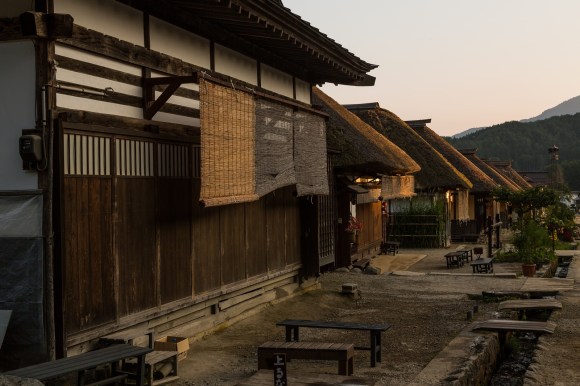
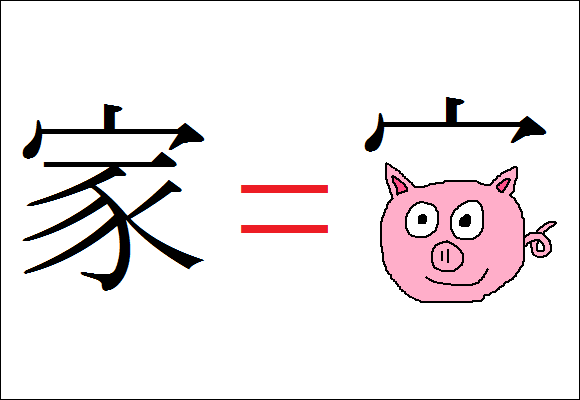


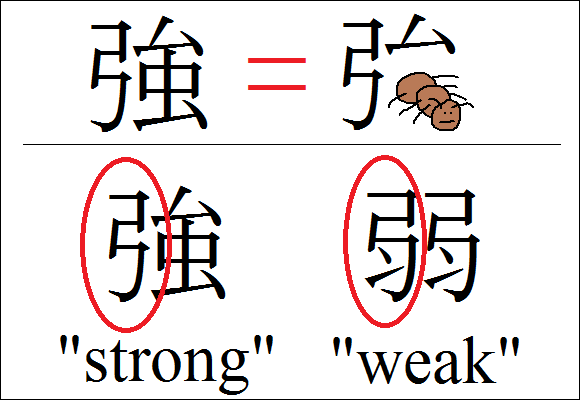
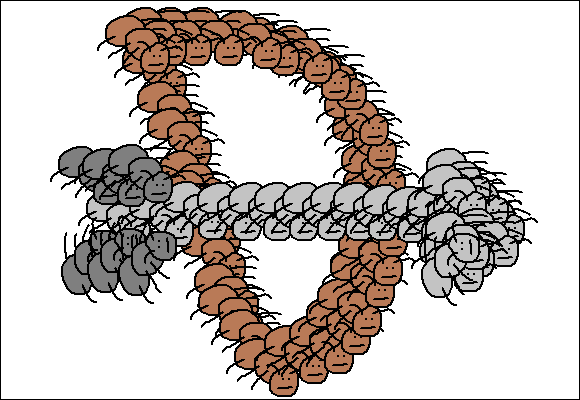
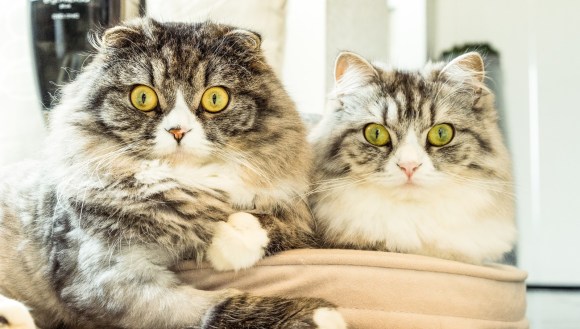
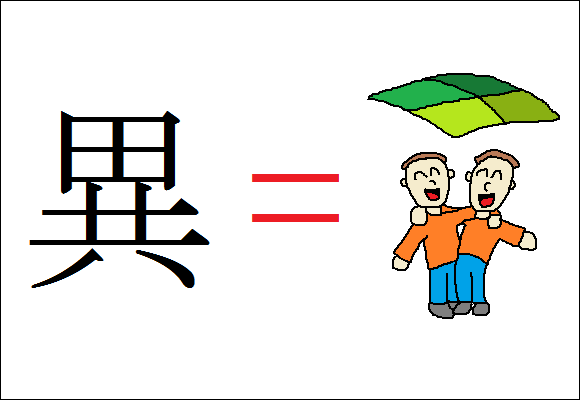
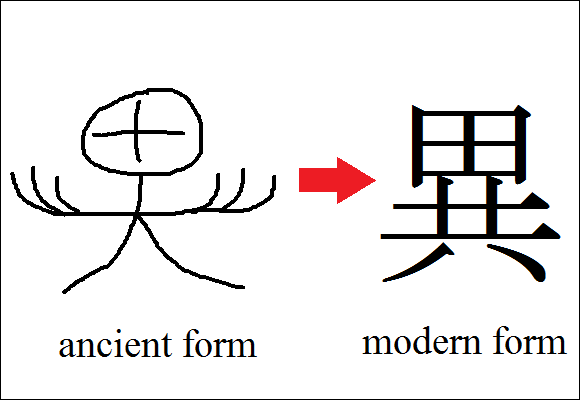
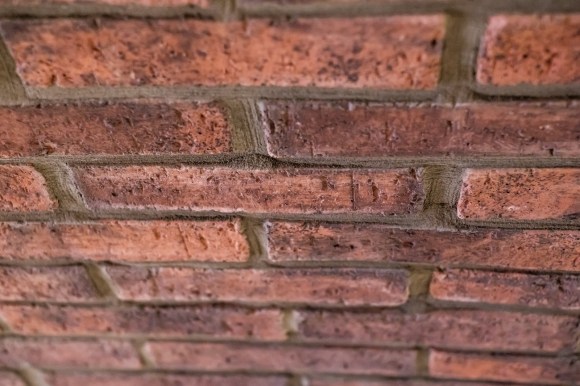
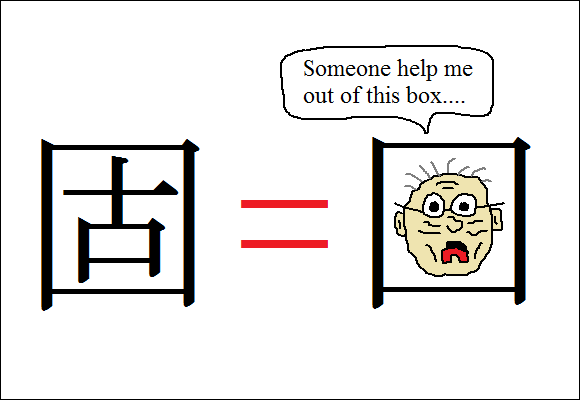
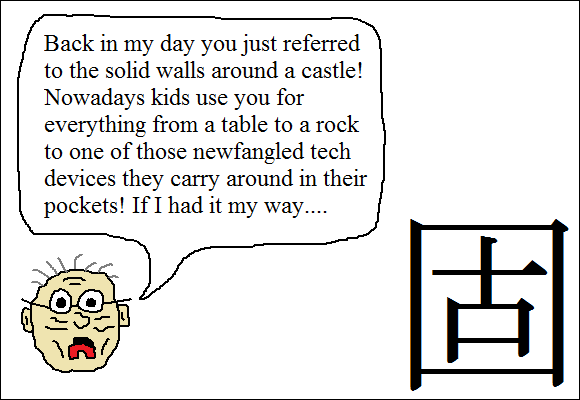
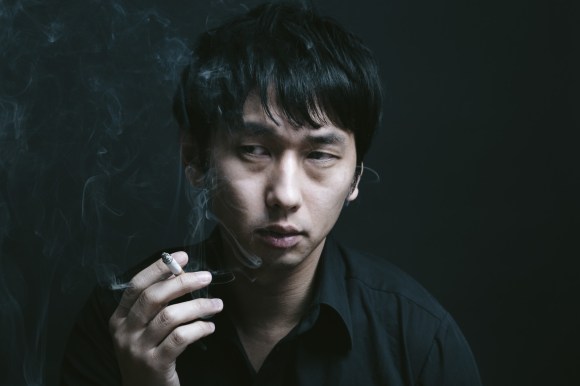


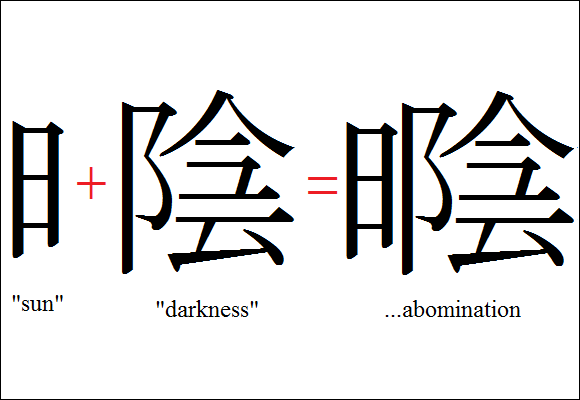

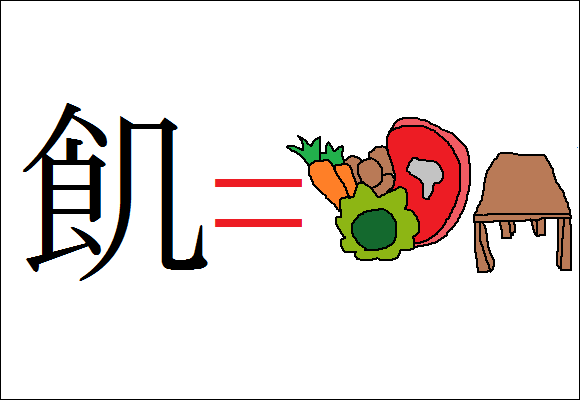
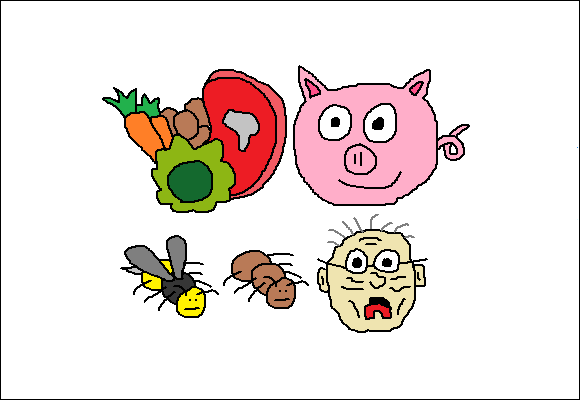
 W.T.F. Japan: Top 5 kanji with the longest readings 【Weird Top Five】
W.T.F. Japan: Top 5 kanji with the longest readings 【Weird Top Five】 W.T.F. Japan: Top 5 strangest kanji ever 【Weird Top Five】
W.T.F. Japan: Top 5 strangest kanji ever 【Weird Top Five】 W.T.F. Japan: Top 5 most confusing Japanese compound words【Weird Top Five】
W.T.F. Japan: Top 5 most confusing Japanese compound words【Weird Top Five】 W.T.F. Japan: Top 5 most ridiculous kanji handwriting shortcuts【Weird Top Five】
W.T.F. Japan: Top 5 most ridiculous kanji handwriting shortcuts【Weird Top Five】 W.T.F. Japan: Top 5 most difficult kanji ever【Weird Top Five】
W.T.F. Japan: Top 5 most difficult kanji ever【Weird Top Five】 Majority of Japanese mayors say foreign residents are essential but most see good and bad effects
Majority of Japanese mayors say foreign residents are essential but most see good and bad effects The Purple Lucky Bag from Village Vanguard is an extra-large waste of money
The Purple Lucky Bag from Village Vanguard is an extra-large waste of money Japanese beef bowl chain Sukiya’s 2026 Smile Box lucky bag basically pays for itself
Japanese beef bowl chain Sukiya’s 2026 Smile Box lucky bag basically pays for itself Rakuten randomly offers 58 New Year’s osechi feasts in Japan, but did we get a star or a dud?
Rakuten randomly offers 58 New Year’s osechi feasts in Japan, but did we get a star or a dud? Four Shinto shrines to pray for love at in Japan to start the New Year
Four Shinto shrines to pray for love at in Japan to start the New Year Village Vanguard’s most expensive Black Lucky Bag sets an ominous tone for 2026
Village Vanguard’s most expensive Black Lucky Bag sets an ominous tone for 2026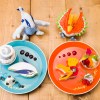 Ho-Oh and Lugia desserts to descend on the Pokémon Cafe in Tokyo
Ho-Oh and Lugia desserts to descend on the Pokémon Cafe in Tokyo Birth Japan’s 2023 Lucky Bag will bring out your inner Japanese gangster【Photos】
Birth Japan’s 2023 Lucky Bag will bring out your inner Japanese gangster【Photos】 Treat Yourself to this Japanese Delicacy if You Dare – Ovaries From a Poisonous Fish!
Treat Yourself to this Japanese Delicacy if You Dare – Ovaries From a Poisonous Fish! Tokyo fish market breaks New Year auction record as single fish sells for over 5 million yen【Vid】
Tokyo fish market breaks New Year auction record as single fish sells for over 5 million yen【Vid】 Starbucks Japan ready to get Year of the Horse started with adorable drinkware and plushies【Pics】
Starbucks Japan ready to get Year of the Horse started with adorable drinkware and plushies【Pics】 Hayao Miyazaki says Happy New Year to Studio Ghibli fans with new art for Year of the Horse
Hayao Miyazaki says Happy New Year to Studio Ghibli fans with new art for Year of the Horse We found possibly the quietest Japanese-style hotel in Tokyo’s bustling Shinjuku district
We found possibly the quietest Japanese-style hotel in Tokyo’s bustling Shinjuku district Cup Noodle tries an authentic Jiro-style ramen, but something’s not quite right
Cup Noodle tries an authentic Jiro-style ramen, but something’s not quite right The best Starbucks Japan Frappuccinos we want to drink again in 2026
The best Starbucks Japan Frappuccinos we want to drink again in 2026 We revisited Sweets Paradise after a decade to see if Japan’s dessert buffet still delivers
We revisited Sweets Paradise after a decade to see if Japan’s dessert buffet still delivers That time Seiji called JASRAC to ask why he didn’t get paid royalties for his song being on TV
That time Seiji called JASRAC to ask why he didn’t get paid royalties for his song being on TV Japan’s oldest largetooth sawfish in captivity back on display in Mie Prefecture
Japan’s oldest largetooth sawfish in captivity back on display in Mie Prefecture Pizza Hut Japan’s hot lucky bags are perfect for a New Year’s pizza party
Pizza Hut Japan’s hot lucky bags are perfect for a New Year’s pizza party 7-Eleven Japan starts new temporary luggage storage service in over 300 branches
7-Eleven Japan starts new temporary luggage storage service in over 300 branches Disillusionment at Tsukiji’s tourist-target prices led us to a great ramen restaurant in Tokyo
Disillusionment at Tsukiji’s tourist-target prices led us to a great ramen restaurant in Tokyo Starbucks teams up with 166-year-old Kyoto doll maker for Year of the Horse decorations【Photos】
Starbucks teams up with 166-year-old Kyoto doll maker for Year of the Horse decorations【Photos】 Tokyo considering law requiring more trash cans following litter increase in heavily touristed area
Tokyo considering law requiring more trash cans following litter increase in heavily touristed area Tokyo’s Tsukiji sushi neighborhood asks tour groups to stay away for the rest of the month
Tokyo’s Tsukiji sushi neighborhood asks tour groups to stay away for the rest of the month Tokyo event lets you travel back in time, for free, to celebrate 100 years since Showa era start
Tokyo event lets you travel back in time, for free, to celebrate 100 years since Showa era start Japan may add Japanese language proficiency, lifestyle classes to permanent foreign resident requirements
Japan may add Japanese language proficiency, lifestyle classes to permanent foreign resident requirements Sanrio theme park in Japan announces plans to expand into a Sanrio resort
Sanrio theme park in Japan announces plans to expand into a Sanrio resort Stamina-destroying “Paralysis Noodles” are Tokyo’s newest over-the-top ramen innovation
Stamina-destroying “Paralysis Noodles” are Tokyo’s newest over-the-top ramen innovation Survey asks foreign tourists what bothered them in Japan, more than half gave same answer
Survey asks foreign tourists what bothered them in Japan, more than half gave same answer Japan’s human washing machines will go on sale to general public, demos to be held in Tokyo
Japan’s human washing machines will go on sale to general public, demos to be held in Tokyo Japan’s deadliest food claims more victims, but why do people keep eating it for New Year’s?
Japan’s deadliest food claims more victims, but why do people keep eating it for New Year’s? We deeply regret going into this tunnel on our walk in the mountains of Japan
We deeply regret going into this tunnel on our walk in the mountains of Japan Studio Ghibli releases Kodama forest spirits from Princess Mononoke to light up your home
Studio Ghibli releases Kodama forest spirits from Princess Mononoke to light up your home Major Japanese hotel chain says reservations via overseas booking sites may not be valid
Major Japanese hotel chain says reservations via overseas booking sites may not be valid Put sesame oil in your coffee? Japanese maker says it’s the best way to start your day【Taste test】
Put sesame oil in your coffee? Japanese maker says it’s the best way to start your day【Taste test】 No more using real katana for tourism activities, Japan’s National Police Agency says
No more using real katana for tourism activities, Japan’s National Police Agency says Starbucks Japan reveals new sakura drinkware collection, inspired by evening cherry blossoms
Starbucks Japan reveals new sakura drinkware collection, inspired by evening cherry blossoms Updated cherry blossom forecast shows extra-long sakura season for Japan this year
Updated cherry blossom forecast shows extra-long sakura season for Japan this year W.T.F. Japan: Top 5 most insane kanji place names in Japan【Weird Top Five】
W.T.F. Japan: Top 5 most insane kanji place names in Japan【Weird Top Five】 W.T.F. Japan: Top 5 myths about learning Japanese【Weird Top Five】
W.T.F. Japan: Top 5 myths about learning Japanese【Weird Top Five】 W.T.F. Japan: One year anniversary special! Top 5 W.T.F. Japan articles 【Weird Top Five】
W.T.F. Japan: One year anniversary special! Top 5 W.T.F. Japan articles 【Weird Top Five】 W.T.F. Japan: Top 5 Japanese words with cool ancient origin stories【Weird Top Five】
W.T.F. Japan: Top 5 Japanese words with cool ancient origin stories【Weird Top Five】 W.T.F. Japan: Top 5 most confusing Japanese counter words【Weird Top Five】
W.T.F. Japan: Top 5 most confusing Japanese counter words【Weird Top Five】 W.T.F. Japan: Top 5 creepiest Japanese insects 【Weird Top Five】
W.T.F. Japan: Top 5 creepiest Japanese insects 【Weird Top Five】 W.T.F. Japan: Top 5 biggest Japanese food challenges【Weird Top Five】
W.T.F. Japan: Top 5 biggest Japanese food challenges【Weird Top Five】 W.T.F. Japan: Top 5 best Tamagotchi releases 【Weird Top Five】
W.T.F. Japan: Top 5 best Tamagotchi releases 【Weird Top Five】 W.T.F. Japan: Top 5 confusing Japanese hand gestures【Weird Top Five】
W.T.F. Japan: Top 5 confusing Japanese hand gestures【Weird Top Five】 W.T.F. Japan: Top 5 most hilarious Japanese euphemisms 【Weird Top Five】
W.T.F. Japan: Top 5 most hilarious Japanese euphemisms 【Weird Top Five】 W.T.F. Japan: Top 5 nicest sounds in Japan【Weird Top Five】
W.T.F. Japan: Top 5 nicest sounds in Japan【Weird Top Five】 W.T.F. Japan: Top 5 craziest Japanese certification exams 【Weird Top Five】
W.T.F. Japan: Top 5 craziest Japanese certification exams 【Weird Top Five】 W.T.F. Japan: The top five “sora” references of all time! 【Weird Top Five】
W.T.F. Japan: The top five “sora” references of all time! 【Weird Top Five】 W.T.F. Japan: Top 5 confusing Japanese Internet slang words 【Weird Top Five】
W.T.F. Japan: Top 5 confusing Japanese Internet slang words 【Weird Top Five】 W.T.F. Japan: Top 5 creepiest Japanese animals 【Weird Top Five】
W.T.F. Japan: Top 5 creepiest Japanese animals 【Weird Top Five】
Leave a Reply